Images of Craigleith Quarry
The best engravings/photographs of the quarry can be viewed at
Edinphoto.
Below are some of the best images that I have managed to source.

1929 Map showing the two quarry faces. (Ref: Map Library - Edinburgh Craigleith 1929)
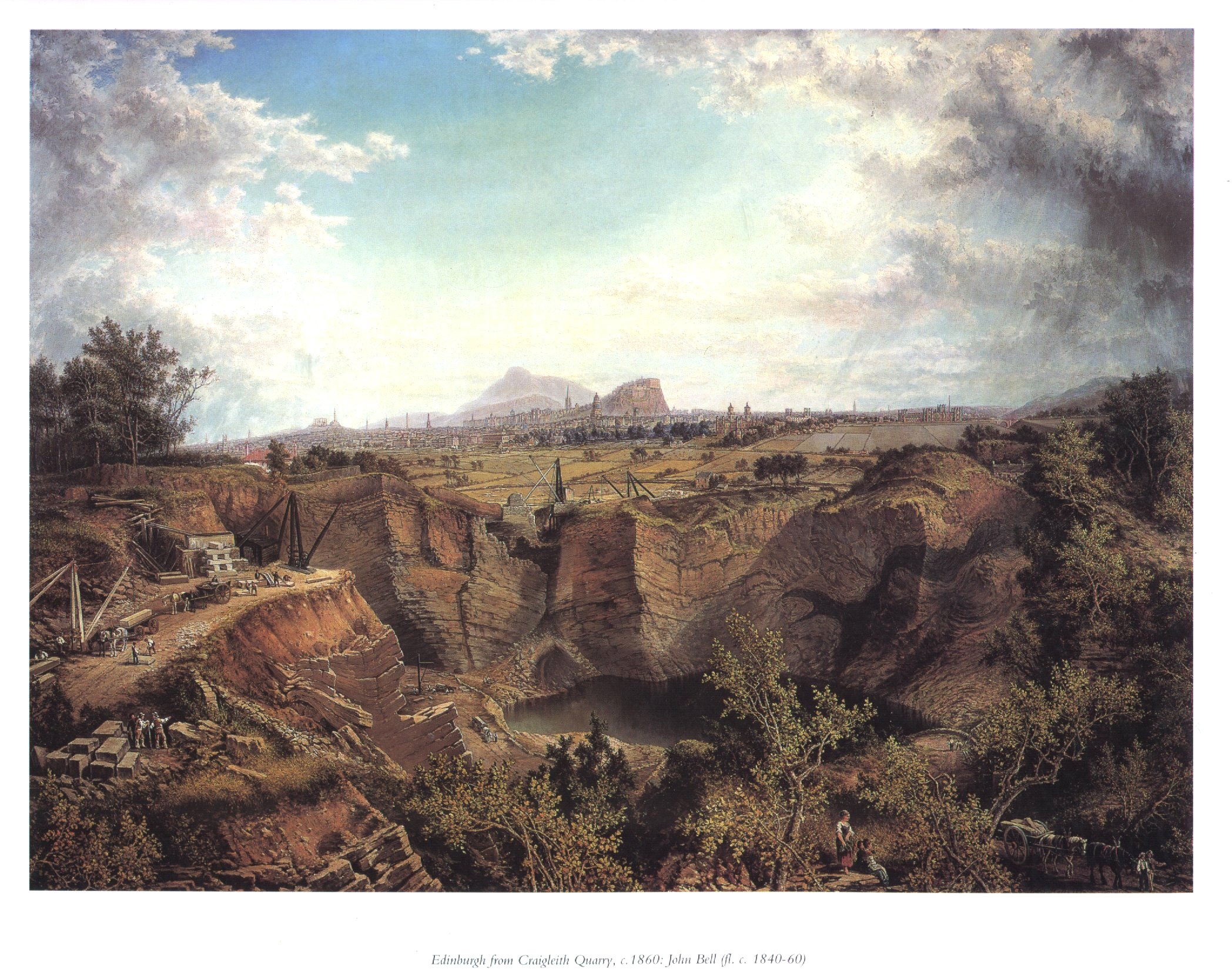
This painting is by John Bell (c. 1860) titled 'Edinburgh from Craigleith Quarry'. Shown here by permission
of the Edinburgh City Art Centre.
The shop where copies of prints
can be obtained is situated at 2 Market Street.
The original is hanging in the entrance hall of the City Chambers Edinburgh.
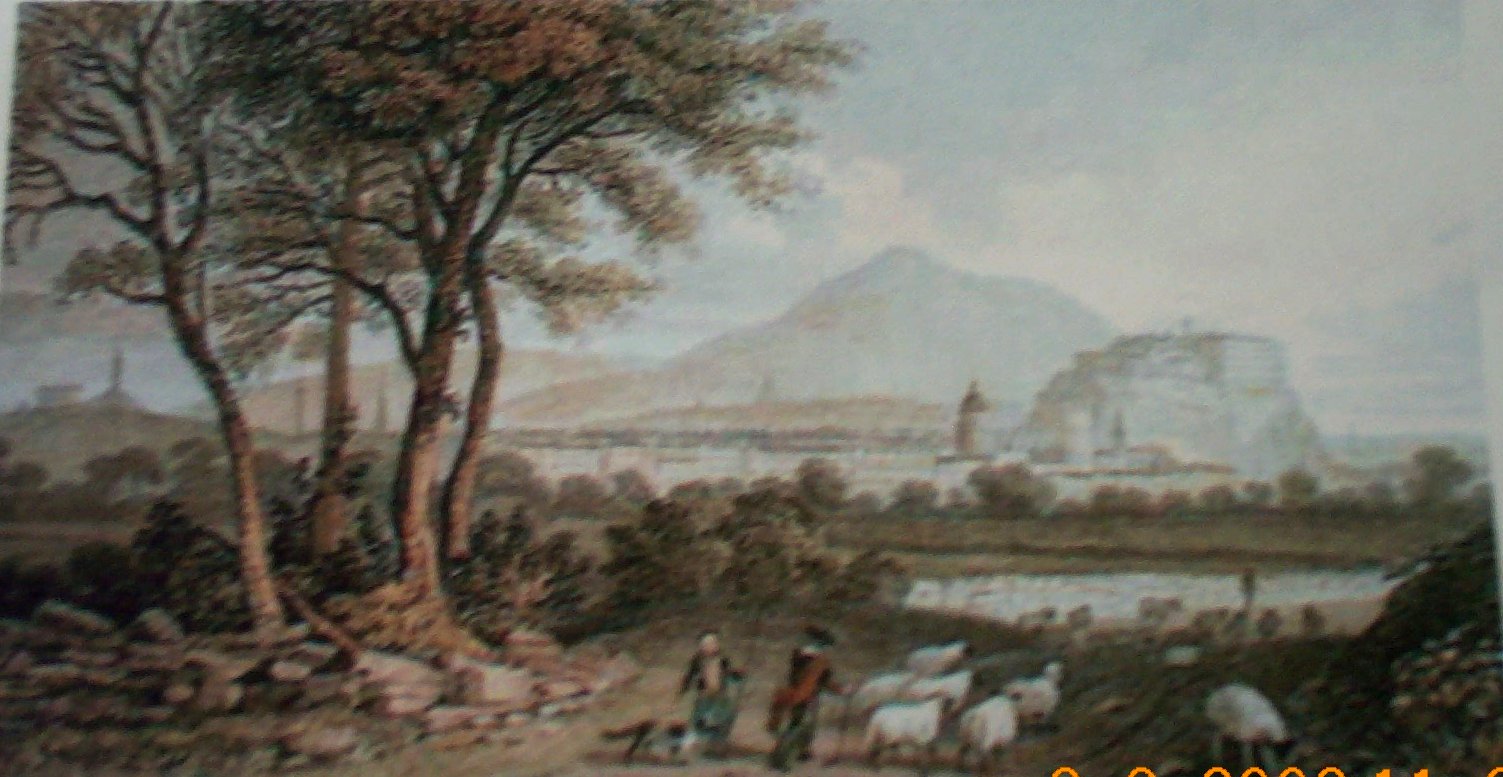
Edinburgh from Craigleith Quarry showing Castle and Arthur Seat in the background.
Engraving of drawing by Thomas H. Shepherd.
Shown here by permission of Richard Nicholson of Chester.
The following photographs have been obtained from the Royal Commission on
the Ancient and Historical Monuments of Scotland (RCAHMS) John Sinclair House,
16 Bernard Terrace, Edinburgh EH8 9NX.
Copies of the photographs can
be bought from the RCAHMS. The quality of some of the earlier photographs
compared to the later ones demonstrates the increase in both photography
and aviation technology.
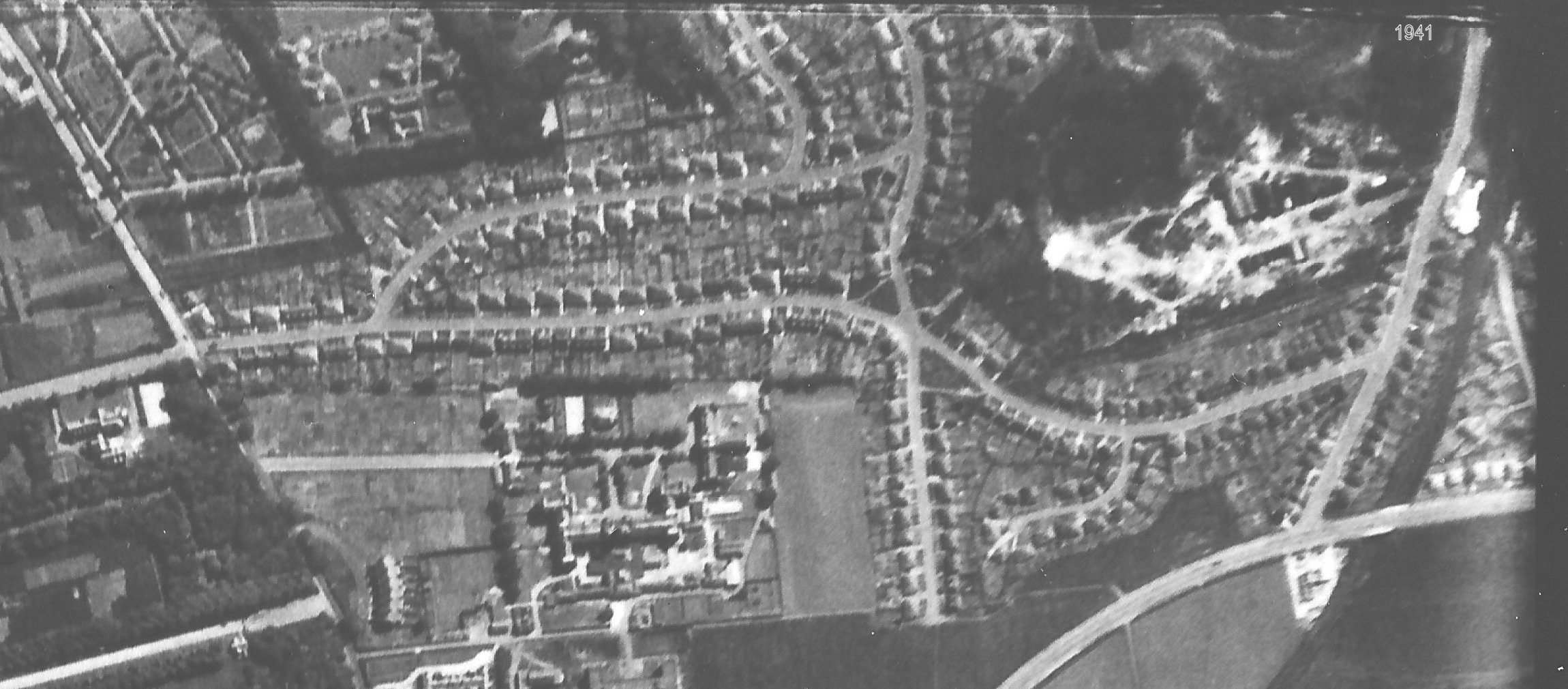
1941 Crown Copyright: RCAHMS
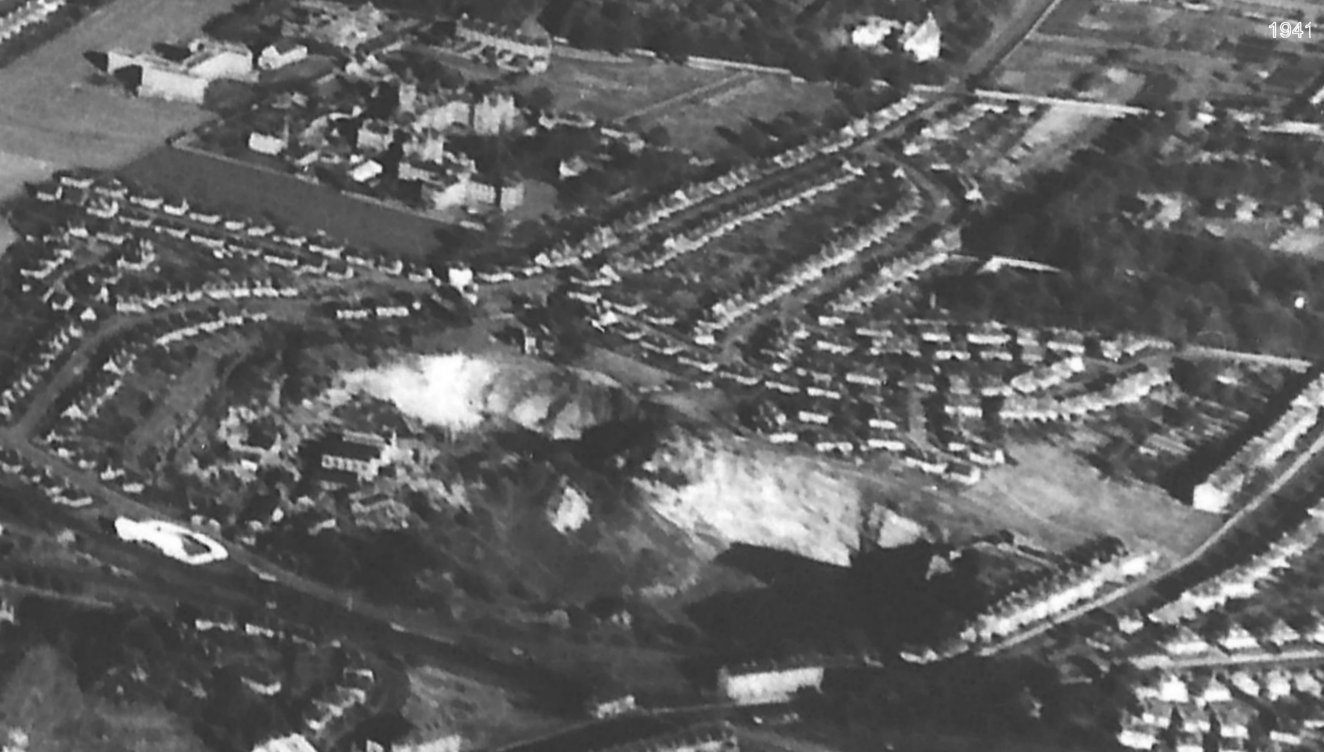
1941 Crown Copyright: RCAHMS

1946 Crown Copyright/ MOD

1951 Copyright: M.McArthur
The aerial photograph (above) of Craigleith Quarry shows Groathill Road South (in white)
starting at the middle left of the picture and going off to the right where it
would eventually meet up with Telford Road. The top end of Craigleith Hill
Avenue can be seen joining up with Groathill Road South. The Blinkbonny houses
can be seen as a circle towards the top left of the photo where the Maidencraig
quarry was situated.
James Miller comments on this photograph as follows:-
'The quarry was split into two, separated by a ridge of rock and the water levels
were different.'
James can remember fishing for minnows and sticklebacks in 'our quarry' (the one
on the right of the photograph above) and also remembers a mini rail track for small
dumping trucks near to the building marked B in the photograph. He can also remember railway trucks containing bricks and other merchandise
on the near South Groathill Avenue.
The railway crossed South Groathill Avenue into Millers and in the 50s it was
the only ungated road crossing in Edinburgh.
The quarry on the left in the above photograph was owned by the Gas Board and
the water was pumped to a pipe which started mid-way up the cliff at (A) on the
photograph and then was piped to the coking plant at Granton Gas Works.
The site to the right of the quarry was used for Millers joinery works, plant depot,
and for storage of huts and materials. The long white roofed building was the joinery
works built around 1940s early 50s. In the early 50 Sir James Miller gave permission
to the City Council to use the quarry as a tip for household rubbish. This was not
popular with those working there as the smell could be strong but there was a lack
of tipping facilities in Edinburgh for household waste at that time.
Tipping shows in the bottom right of the above photo (marked C).
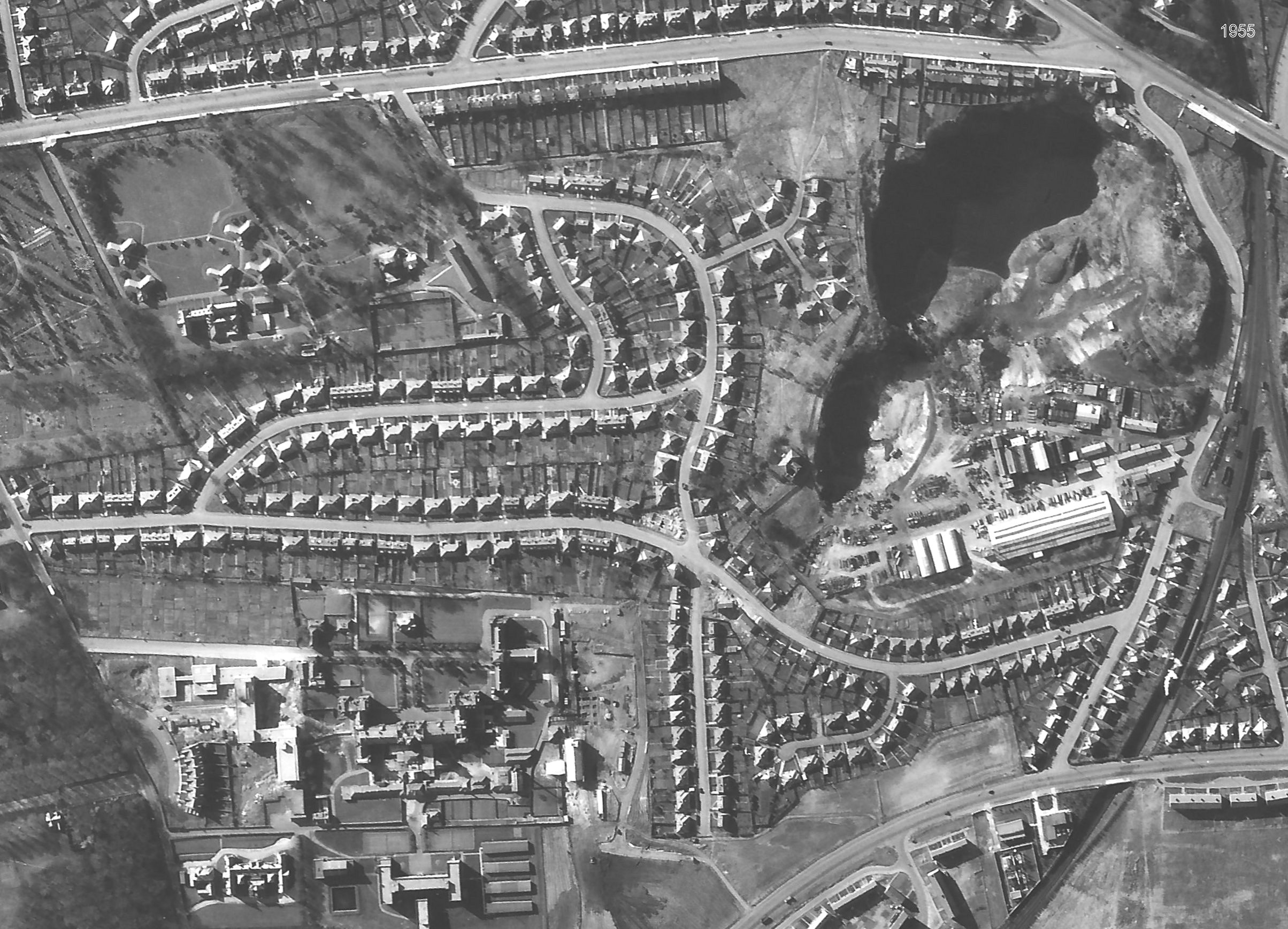
1955 Crown Copyright/ MOD
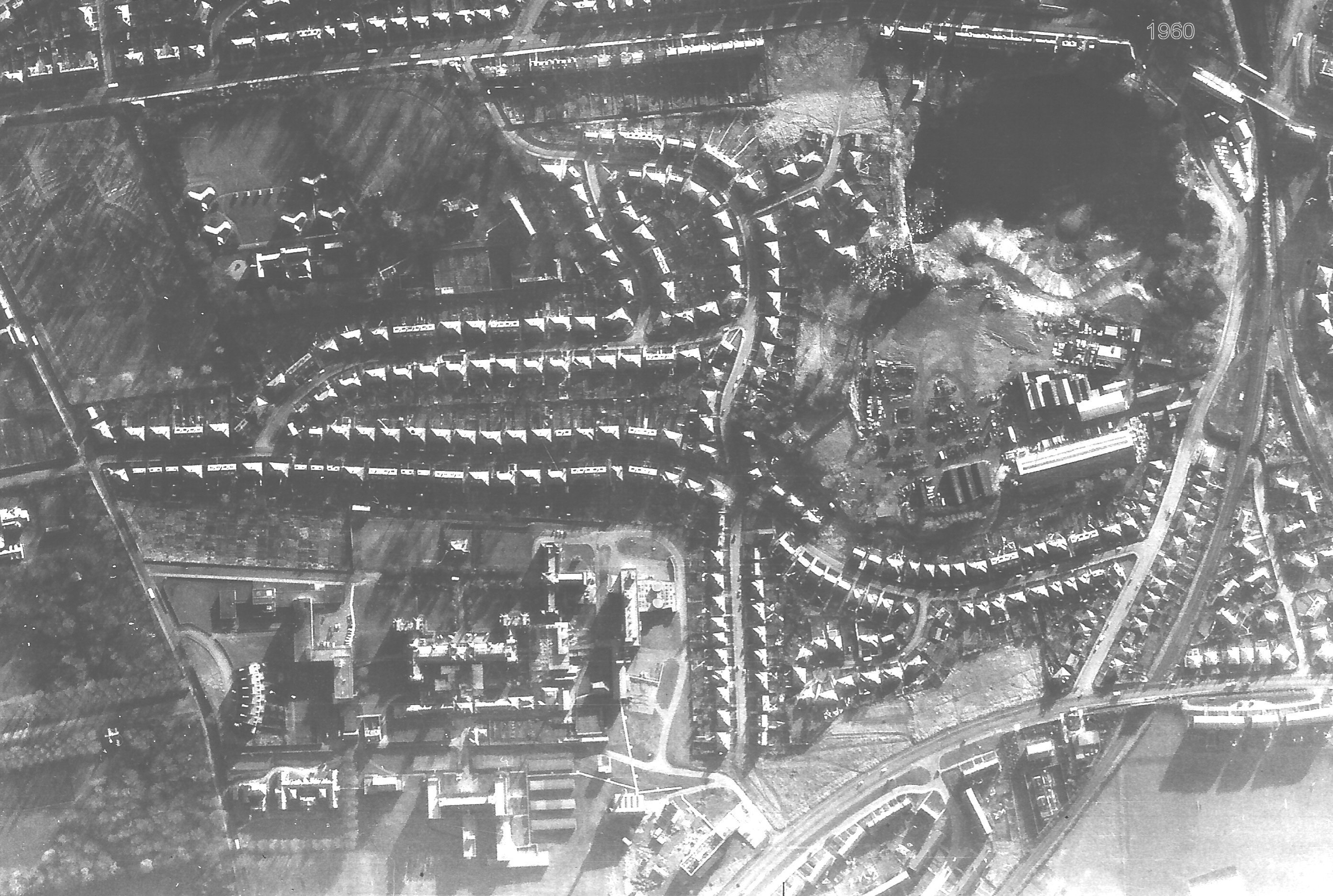
1960 Crown Copyright /MOD
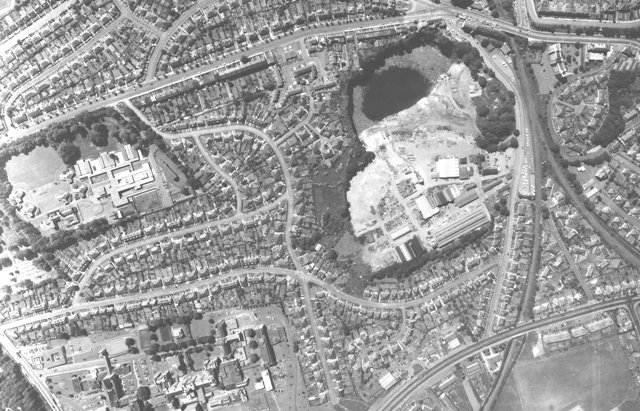
1973 Crown Copyright: RCAHMS

1982 Copyright RCAHMS
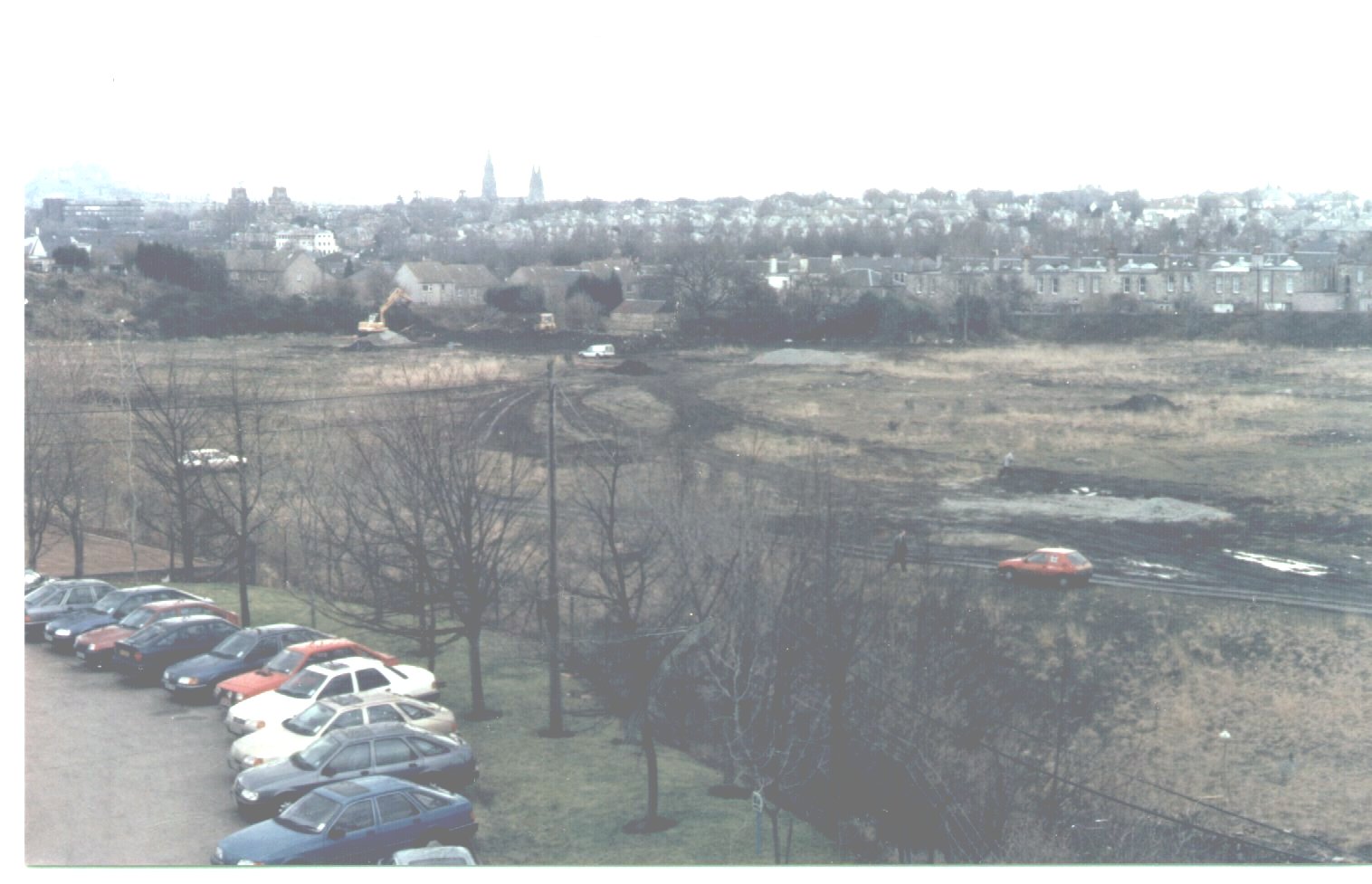
This photograph was taken from the Miller Group Headquarters looking East
to the back of the Craigleith Road houses and shows the first surveys being carried out prior to the building of Sainsburys.
You can click on this image to view larger size. (Photo supplied by a member of staff).
Below is a link to an excellent black and white photograph (1860) of the Quarry face looking towards the castle taken by George Washington Wilson:
Craigleith Quarry by George Washington Wilson
It shows Ramsay Cottage on its own as well as part of the 'red tiled roofed' house seen in the Bell oil painting.
This is part of an extensive collection held by Aberdeen University:
(https://www.abdn.ac.uk/special-collections/george-washington-wilson.php)